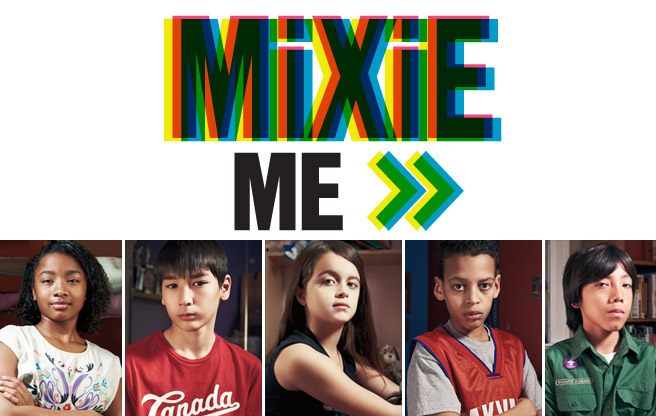Comprehension is often not what it appears to be. I think we’ve proven this (in a post here, for example). When students believe they are showing their comprehension, they often are just regurgitating words from the text. Equally troubling, this may include plagiarised segments or at minimum, senseless strings of quotes. Where we could simply practice answering comprehension questions continually, I’ve found it worthwhile to show how different answers indicate different levels of textual comprehension.
Take a paragraph from any reading. The one I’m using is from Toronto Life, a popular magazine focusing on local issues with articles varying in length and complexity. This particular text centres around the changing attitudes towards mixed-race individuals, a visibly relevant feature of the multicultural Toronto. While I do activities to build background knowledge among students, here I’ll focus on just the comprehension side: I give them excerpts that include more academic elements and appropriate complexities to focus on. You can find the full text here. Here’s an example of how I use this text (for students / for teachers):
Hune-Brown (2013:40) discusses the changing attitudes towards children of mixed-race couples from his experiences as a “mixie” in the 1980s and those in Toronto today:
Instead of being seen as tragic individuals, the mixies of today are being talked about in a far more romantic light. Mixed-race people are portrayed as the harbingers of a utopian future in which “race,” that petty construct, ceases to exist and we all live in harmony—beautiful and content in our exotic, beige-ish glory. Some studies have made the dubious claim that mixed-race people are biologically more attractive, turning those old eugenics-based theories [controlled breeding based on desirable genes] on their head: the same “hybrid vigour” that creates a good sorghum crop apparently also produces healthy, symmetrical beauties like Halle Berry and Keanu Reeves.
Question: What change has occurred regarding how mixed-race individuals have been regarded by society as a whole?
Here, students take the chance to write out their idea of a good answer on their own. After, students exchange answers with a partner. Next, we begin to discuss three different types of answers as a class. After each, students look compare their partners’ answers to identify weak or strong areas.
a) Meaningless quote: People used to see them as “tragic individuals”. Now they are shown as the “harbingers of a utopian future in which ‘race,’…ceases to exist and we all live in harmony.”
After showing this, I elicit its characteristics: correctly answering the question using two direct quotes. We discuss if the answer shows that meaning is understood. The answer obviously is no, because what is inside the quotes is the meat of the meaning–“tragic individuals” and “harbingers of a utopian future”. Without understanding these key concepts, the rest of the text makes little sense. Simply quoting, though perhaps lucky this time, does not demonstrate understanding of these key concepts. The danger in promoting this use of quotes ismisquoting or using them out of context in essays.
b) Poorly paraphrased sample answer: Mix-race people appear as tragedy before but now they are a harmony society.
Another issue that demonstrates a lack of comprehension is a poorly paraphrased answer. This sometimes results from students clinging to taught paraphrasing strategies (e.g. use synonyms, different word classes, etc.) and other times it’s from oversimplification. Still here, students can see how this is as meaningless (and even more harmful for an essay) as the first. example. Of course, it’s easy to use this as a error correction exercise between students too.
c) Strong paraphrase for comprehension: People used to regard mixed-race people negatively; however, they are now viewed as a sign of a harmonious future where race no longer matters.
Unlike the previous two, this answer uses good paraphrasing of key concepts from a) to answer the question in a way that shows not only the right answer but that the writer understands meaning. I ask students then to compare this answer to the previous two and discuss how they are different. This results in a variety of responses, ranging from the lack of quotes to the fact that the phrasing explains those quotes by relating it to the context of the paragraph.
I love it when the light comes on in students’ minds between the comprehension garbledegook exercise in the post mentioned above and these paragraph examples. Not everyone gets it, but with repeated practice and focused feedback, improvement in comprehension does come.
The remainder of this activity is below. Feel free to download, modify and distribute to anyone.
**This blog post is part of 4C blogathon – 5 days. 5 blog posts. Willing to try it?



This is an excellent activity. I am developing my course material for next year now and I will dd a variation of this activity to my skills material. Thanks!
Thanks, John. Glad to hear you find it useful. 🙂
Extremely impressed with your blogathon output this week.
Thanks Lynda. How about the content of it? And where are you blogging these days? 😉
Students can be given an in-class essay or exam to write. Ask students to defend the definitions of race offered by historians at the opening of Episode 2 of RACE by citing specific evidence from the history of Jamestown.
[…] for a different way to check comprehension? Tyson Seburn has some ideas for B2-C1. Worksheet and answer sheet […]